The Beauty and Significance of Tswana Traditional Dresses
The Beauty and Significance of Tswana Traditional Dresses
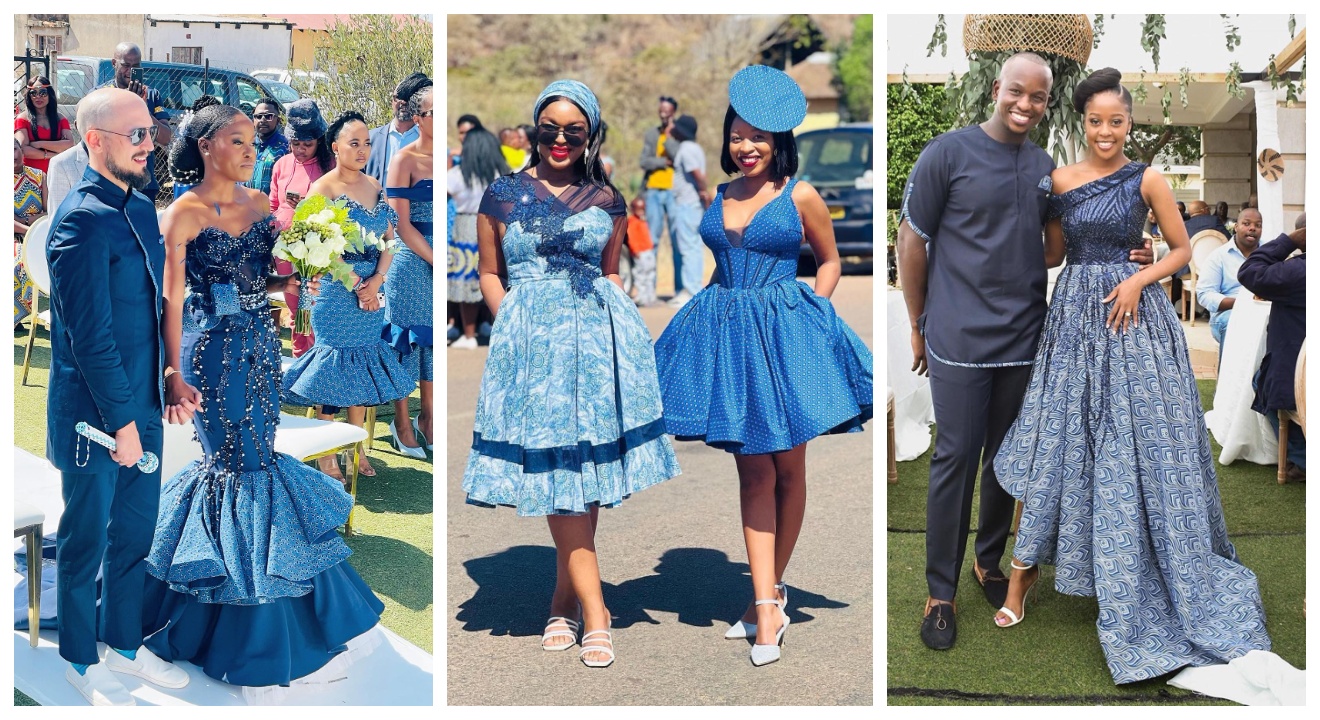
Introduction
Tswana traditional dresses are not only beautiful but also hold great significance in the culture and heritage of the Tswana people. These dresses are a reflection of the rich history and traditions of the Tswana community, and they continue to be worn with pride and reverence today.
Background information on Tswana traditional dresses
The Tswana people, who are one of the largest ethnic groups in Southern Africa, have a long-standing tradition of wearing vibrant and intricately designed traditional dresses. These dresses are typically made from colorful fabrics such as shweshwe or wax prints, and they feature unique patterns and motifs that represent different aspects of Tswana culture.
Tswana traditional dresses are often worn during special occasions such as weddings, initiation ceremonies, and cultural festivals. They are not only a symbol of beauty but also serve as a way for individuals to connect with their heritage and express their cultural identity. The designs and styles of these dresses have evolved over time, incorporating modern elements while still maintaining the essence of Tswana tradition.
These dresses are not only admired for their aesthetic appeal but also for the stories they tell. Each pattern and color combination has a specific meaning, representing values such as love, fertility, strength, or prosperity. By wearing these dresses, individuals honor their ancestors and carry forward the traditions that have been passed down through generations.
In conclusion, Tswana traditional dresses are more than just garments; they are a testament to the beauty and significance of Tswana culture. They represent a connection to the past and a celebration of identity, making them an integral part of the Tswana community’s heritage.
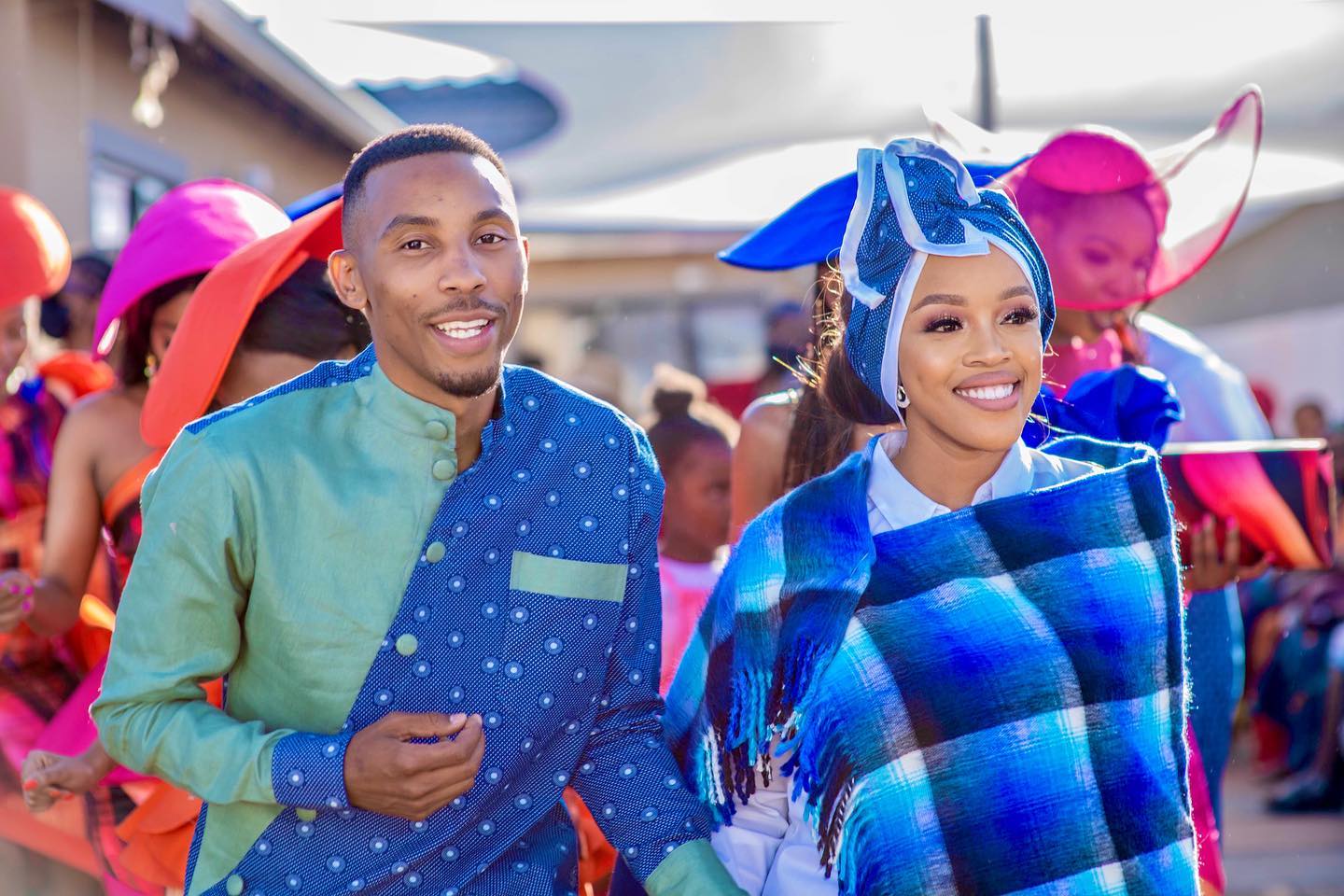
History of Tswana Traditional Dresses
Origins and evolution of Tswana traditional dresses
Tswana traditional dresses hold a significant place in the culture and heritage of the Tswana people. These dresses have a rich history that dates back centuries. They have evolved over time, reflecting changes in fashion trends, societal norms, and cultural influences.
The origins of Tswana traditional dresses can be traced back to the early days when animal skins were used as clothing. As time passed, the Tswana people began incorporating beads, shells, and other decorative elements into their attire. These dresses became a symbol of identity and status within the community.
Over the years, Tswana traditional dresses have undergone various transformations. Today, they are characterized by vibrant colors, intricate patterns, and unique designs. The dresses are often made from fabrics such as cotton or silk and are adorned with embroidery, beadwork, or appliques.
Tswana traditional dresses are not only worn for special occasions but also as everyday attire. They are often passed down through generations, preserving the cultural heritage of the Tswana people.
These dresses not only showcase the beauty of Tswana craftsmanship but also serve as a reminder of the importance of preserving cultural traditions. They play a significant role in promoting cultural diversity and fostering a sense of pride among the Tswana community.
In conclusion, Tswana traditional dresses have a rich history and hold great significance in the culture of the Tswana people. They represent the evolution of fashion and serve as a reminder of the importance of preserving cultural heritage.

Traditional Tswana Dress Styles
Different styles and variations of Tswana traditional dresses
Tswana traditional dresses are not only beautiful but also hold significant cultural value. These dresses are known for their vibrant colors, intricate patterns, and unique designs. The styles and variations of Tswana traditional dresses reflect the rich heritage and traditions of the Tswana people.
One popular style is the “pelele” dress, which features a fitted bodice and a flared skirt. This dress is often adorned with colorful beads and embroidery, showcasing the craftsmanship of the Tswana people. Another style is the “thobega” dress, characterized by its high collar and long sleeves. It is often made from colorful fabric and can be accessorized with a matching headwrap.
The “mokgonyana” dress is another traditional style that is commonly worn during special occasions. It is a two-piece outfit consisting of a blouse and a skirt. The blouse is usually decorated with intricate beadwork, while the skirt is made from vibrant fabric with pleats or ruffles.
Tswana traditional dresses are not only worn for cultural events but also for weddings, celebrations, and other formal occasions. They represent the pride and identity of the Tswana people, showcasing their unique sense of style and cultural heritage.
These dresses are not only visually stunning but also hold deep cultural significance. They serve as a way to preserve and celebrate Tswana traditions, passing them down from one generation to the next. Wearing a Tswana traditional dress is not just about fashion; it is about honoring and embracing the rich history and traditions of the Tswana people.

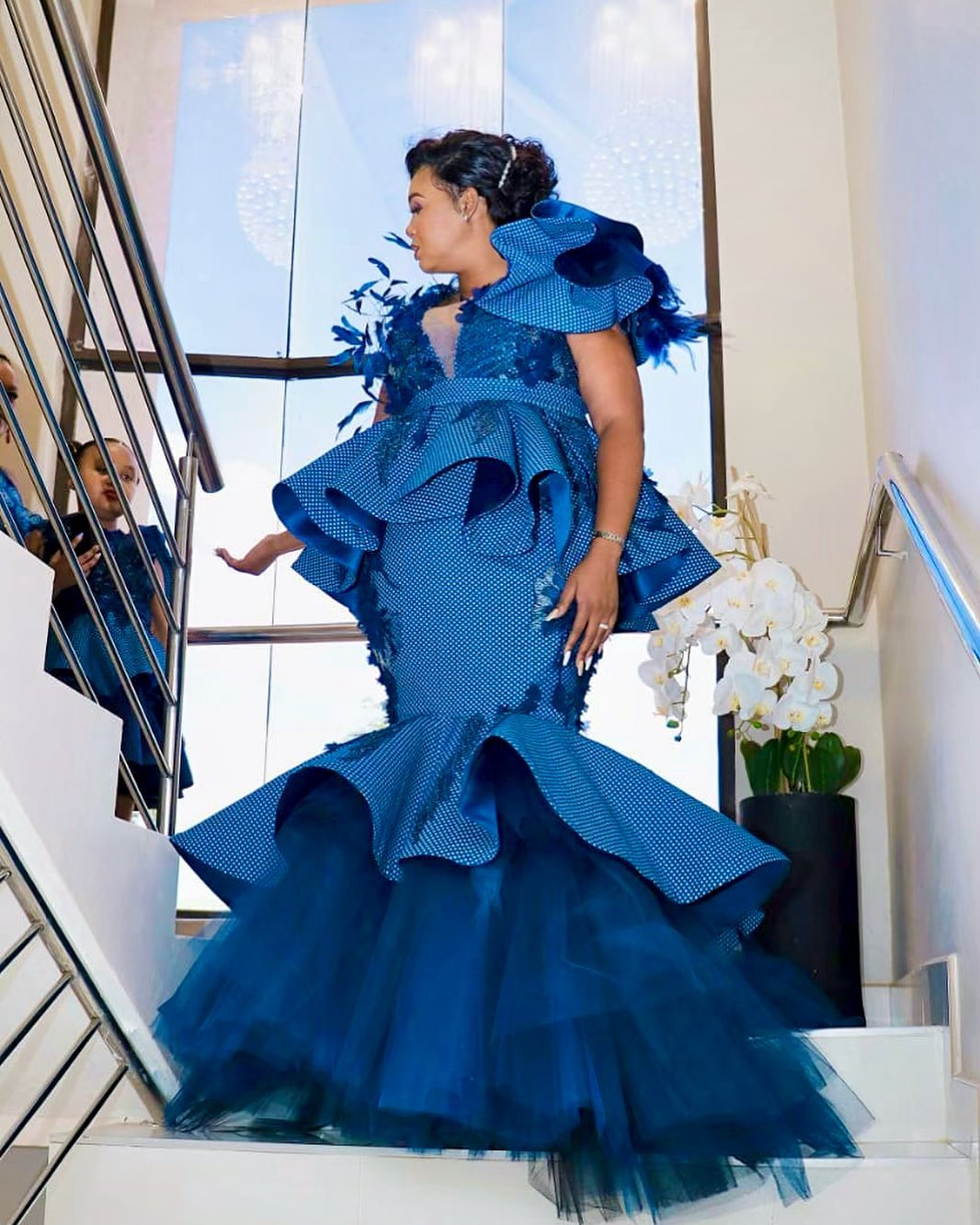
Meaning and Symbolism of Tswana Traditional Dresses
Significance and cultural symbolism of Tswana traditional dresses
Tswana traditional dresses hold a deep cultural significance for the people of Botswana. These dresses are not just garments; they are a reflection of the rich heritage and traditions of the Tswana people.
The Tswana traditional dress, known as “leteisi,” is characterized by vibrant colors, intricate patterns, and unique designs. Each element of the dress carries symbolic meaning, representing different aspects of Tswana culture.
One significant aspect of Tswana traditional dresses is the use of colors. The colors used in the dresses often represent specific meanings. For example, red symbolizes love and passion, while blue represents peace and harmony. The combination of these colors in the dress design tells a story and reflects the wearer’s personality or social status.
The patterns on Tswana traditional dresses are also highly symbolic. They often depict elements from nature, such as animals, plants, or geometric shapes. These patterns carry spiritual significance and are believed to bring good luck and protection to the wearer.
Furthermore, Tswana traditional dresses play a vital role in cultural ceremonies and celebrations. They are worn during weddings, initiation ceremonies, and other important events. By wearing these dresses, individuals honor their heritage and showcase their pride in being part of the Tswana community.
In conclusion, Tswana traditional dresses are not just beautiful garments; they hold deep cultural meaning and symbolism. They represent the traditions, values, and identity of the Tswana people. By wearing these dresses, individuals celebrate their heritage and keep their culture alive for future generations.

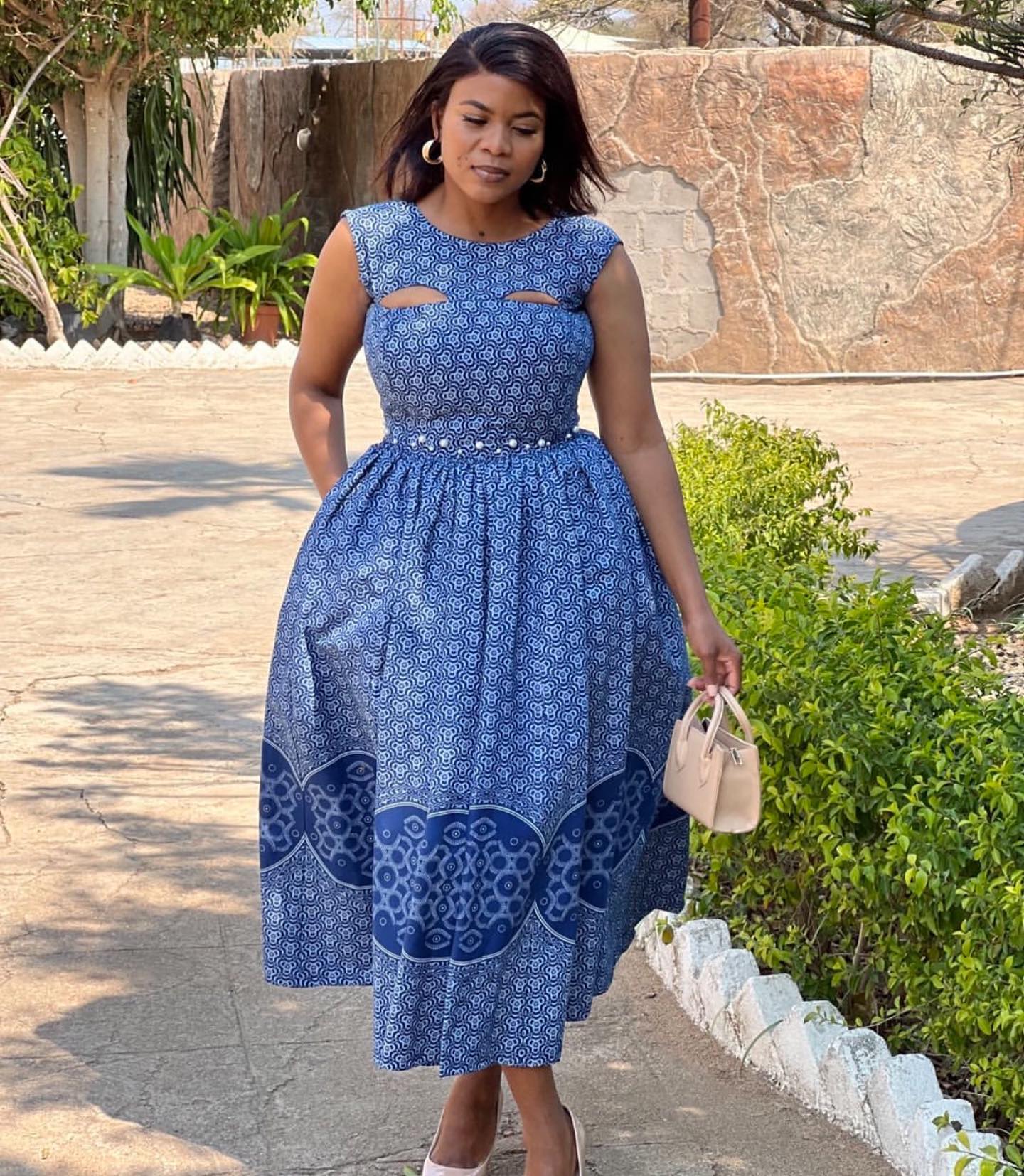
Materials and Accessories Used in Tswana Traditional Dresses
Tswana traditional dresses are not only beautiful but also hold significant cultural value. They showcase the rich heritage and traditions of the Tswana people. Here are some key elements that make Tswana traditional dresses unique and captivating.
Common fabrics, colors, and accessories in Tswana traditional dresses
- Fabrics: Tswana traditional dresses are often made from vibrant and colorful fabrics such as shweshwe, a printed cotton fabric with intricate patterns. Other commonly used fabrics include satin, silk, and chiffon, which add elegance and grace to the dresses.
- Colors: The colors used in Tswana traditional dresses are bold and eye-catching. Red, blue, yellow, and green are commonly seen, symbolizing various aspects of Tswana culture such as love, fertility, wealth, and growth.
- Accessories: Tswana traditional dresses are often adorned with accessories that enhance their beauty. These accessories include beaded necklaces, bracelets, earrings, and headpieces. The beads used are typically vibrant and intricately crafted, adding a touch of glamour to the overall look.
The beauty of Tswana traditional dresses lies not only in their aesthetic appeal but also in the cultural significance they hold. Wearing these dresses is a way for the Tswana people to celebrate their heritage and express their pride in their traditions. Whether worn for special occasions or everyday wear, Tswana traditional dresses are a true reflection of the rich cultural tapestry of Botswana.

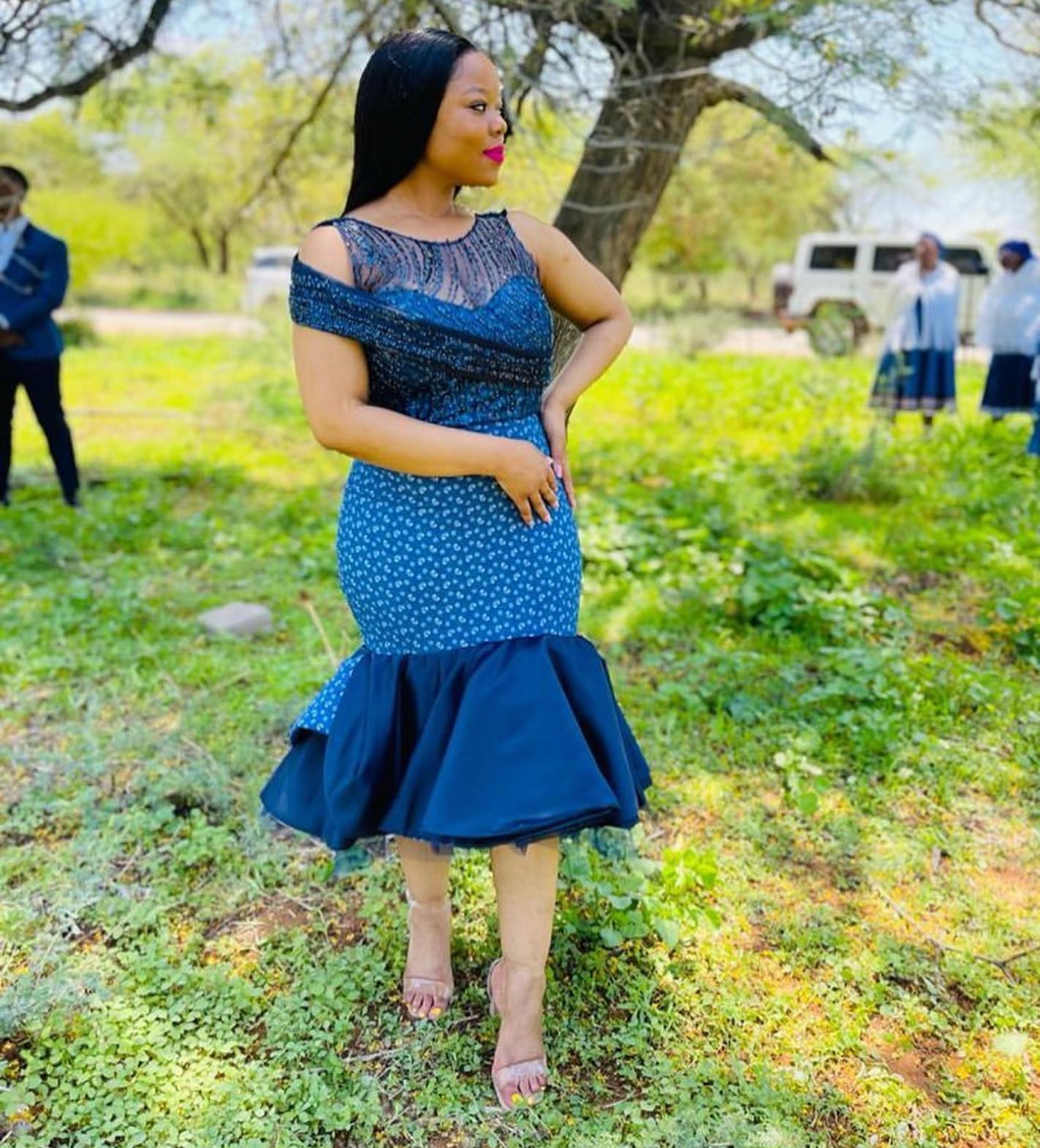
Tswana Traditional Dress Patterns and Designs
Patterns and motifs commonly found in Tswana traditional dresses
Tswana traditional dresses are known for their vibrant colors, intricate patterns, and unique designs. These dresses often feature geometric shapes, such as triangles, squares, and diamonds, which symbolize various aspects of Tswana culture. Motifs like the peacock feather, elephant tusks, and traditional symbols are also commonly incorporated into the designs. The use of bold colors like red, blue, and yellow adds to the visual appeal of these dresses. Tswana traditional dresses are not only beautiful but also hold deep cultural significance. They represent a connection to heritage and traditions, and wearing them is a way of celebrating Tswana identity and pride. Whether worn for special occasions or everyday wear, Tswana traditional dresses are a testament to the rich cultural heritage of the Tswana people.

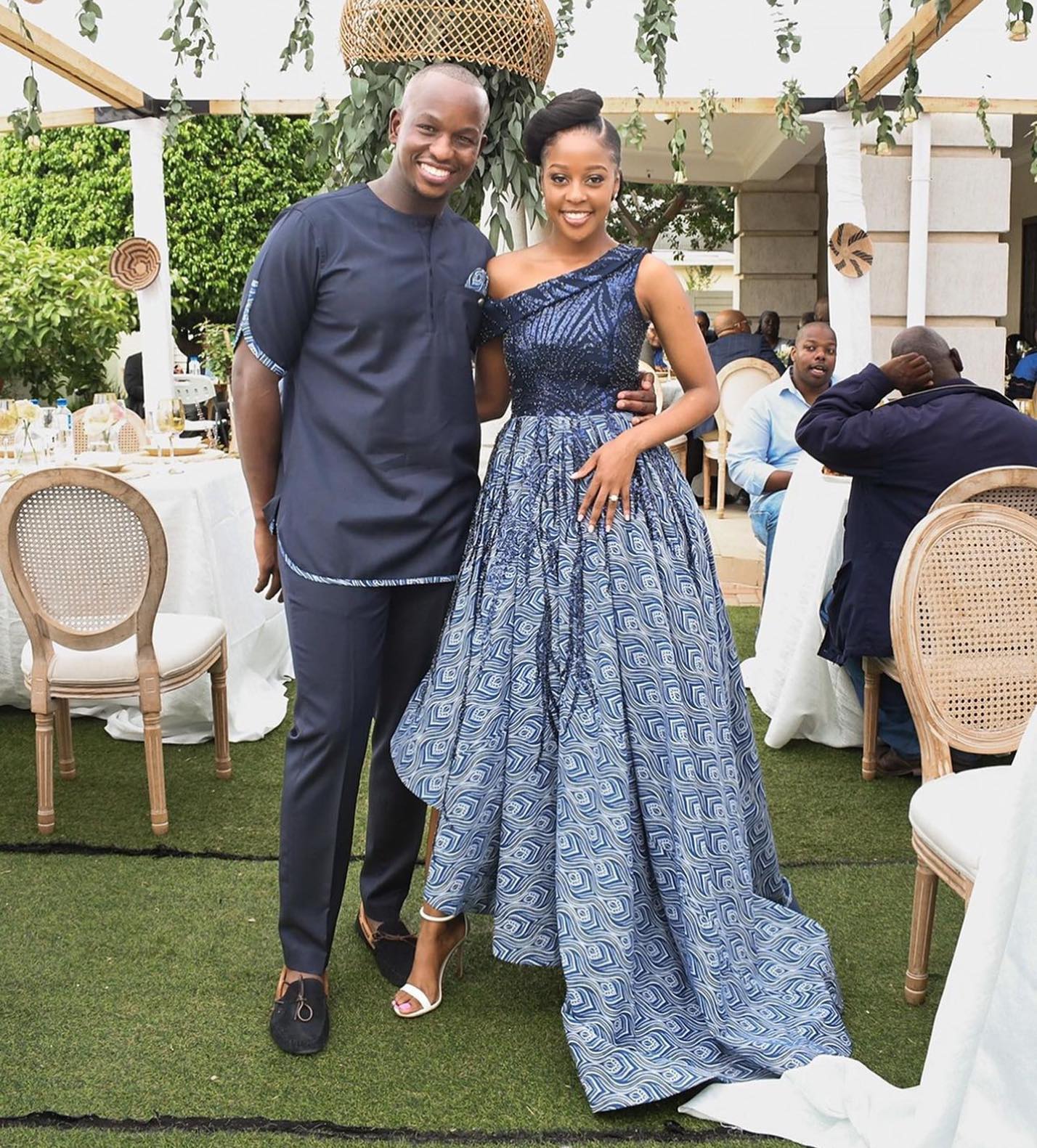
Occasions and Events Where Tswana Traditional Dresses Are Worn
When it comes to celebrating their rich cultural heritage, the Tswana people of Southern Africa proudly don their traditional dresses. These vibrant and intricately designed garments hold deep meaning and significance, reflecting the history, values, and identity of the Tswana community.
Traditional events and celebrations where Tswana traditional dresses are worn
- Weddings: Tswana traditional dresses are a common sight at weddings, symbolizing the union of two families and the start of a new chapter in life. The bride and groom, as well as their families and guests, often dress in elaborate traditional attire, showcasing the beauty and elegance of Tswana culture.
- Initiation ceremonies: These ceremonies mark the transition from childhood to adulthood for young Tswana individuals. Traditional dresses play a significant role in these events, representing maturity, cultural pride, and a connection to ancestral traditions.
- Cultural festivals: Tswana traditional dresses take center stage during cultural festivals and gatherings. These events provide an opportunity for the community to come together, celebrate their heritage, and showcase their unique fashion styles.
- Religious ceremonies: Tswana people also wear their traditional dresses during religious ceremonies, such as baptisms or funerals. These occasions hold deep spiritual significance, and the traditional attire serves as a way to honor their ancestors and connect with their cultural roots.
The beauty of Tswana traditional dresses lies not only in their vibrant colors and intricate designs but also in the stories they tell and the sense of pride they instill in the wearers. These garments are more than just clothing; they are a living testament to the rich cultural heritage of the Tswana people.

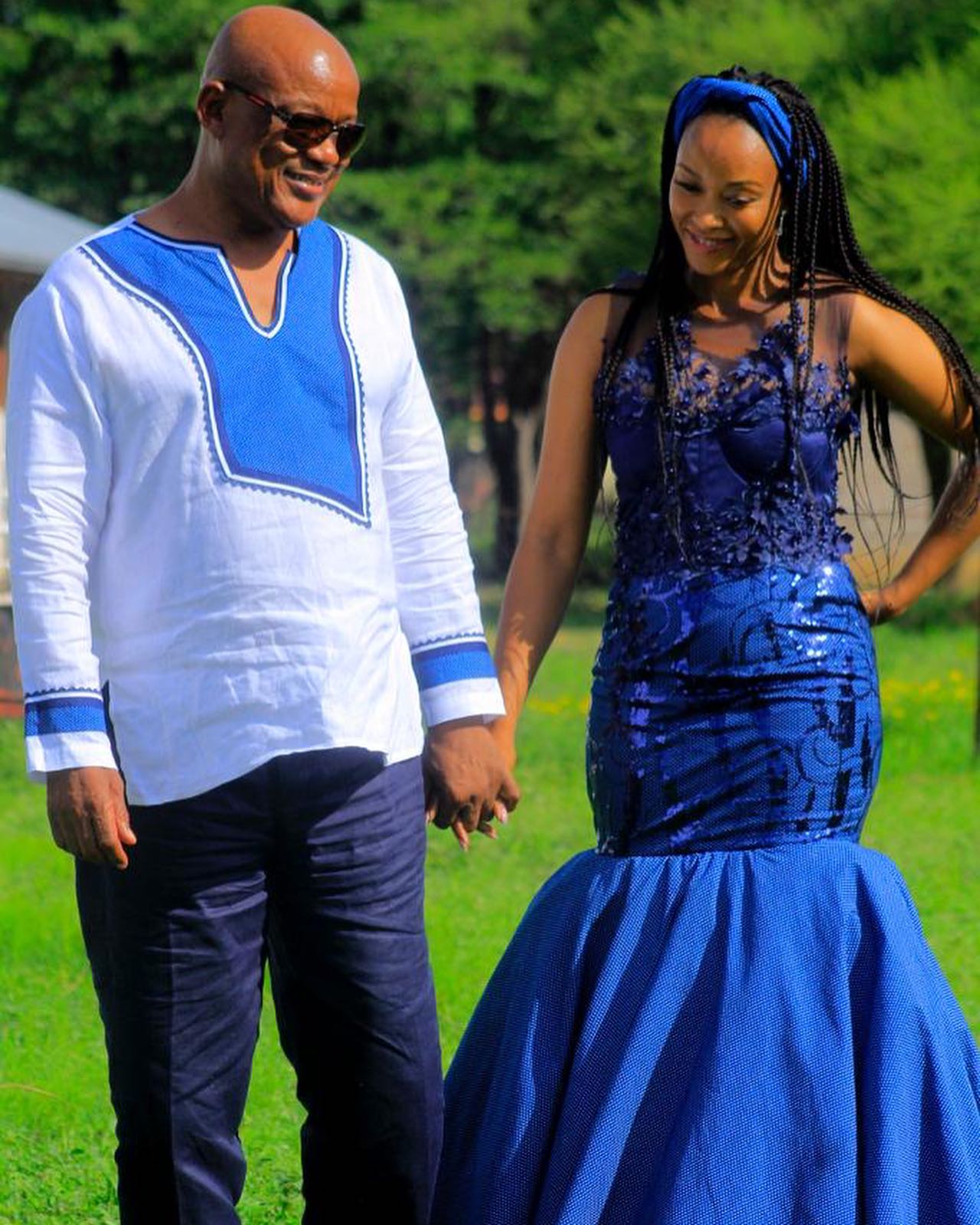
Contemporary Adaptations of Tswana Traditional Dresses
Modern interpretations and adaptations of Tswana traditional dresses
Tswana traditional dresses are not only beautiful but also hold significant cultural value. In recent years, there has been a rise in modern interpretations and adaptations of these dresses, blending traditional elements with contemporary fashion trends.
Designers and fashion enthusiasts have embraced Tswana traditional dresses, incorporating vibrant colors, intricate patterns, and unique silhouettes into their designs. These modern adaptations allow individuals to celebrate their heritage while staying fashionable.
One popular adaptation is the incorporation of modern fabrics such as chiffon, satin, and lace into the traditional dress styles. This adds a touch of elegance and versatility to the outfits, making them suitable for various occasions.
Another trend is the fusion of Tswana traditional dress elements with Western fashion trends. This includes incorporating Western-style cuts, embellishments, and accessories into the traditional dress designs. The result is a harmonious blend of cultures that showcases the beauty of both worlds.
Contemporary adaptations of Tswana traditional dresses have gained popularity not only within the Tswana community but also among people from different cultural backgrounds. They serve as a symbol of cultural pride and appreciation for African heritage.
In conclusion, the beauty and significance of Tswana traditional dresses are being celebrated through modern interpretations and adaptations. These contemporary designs allow individuals to embrace their culture while staying fashionable and showcasing the rich traditions of the Tswana people.
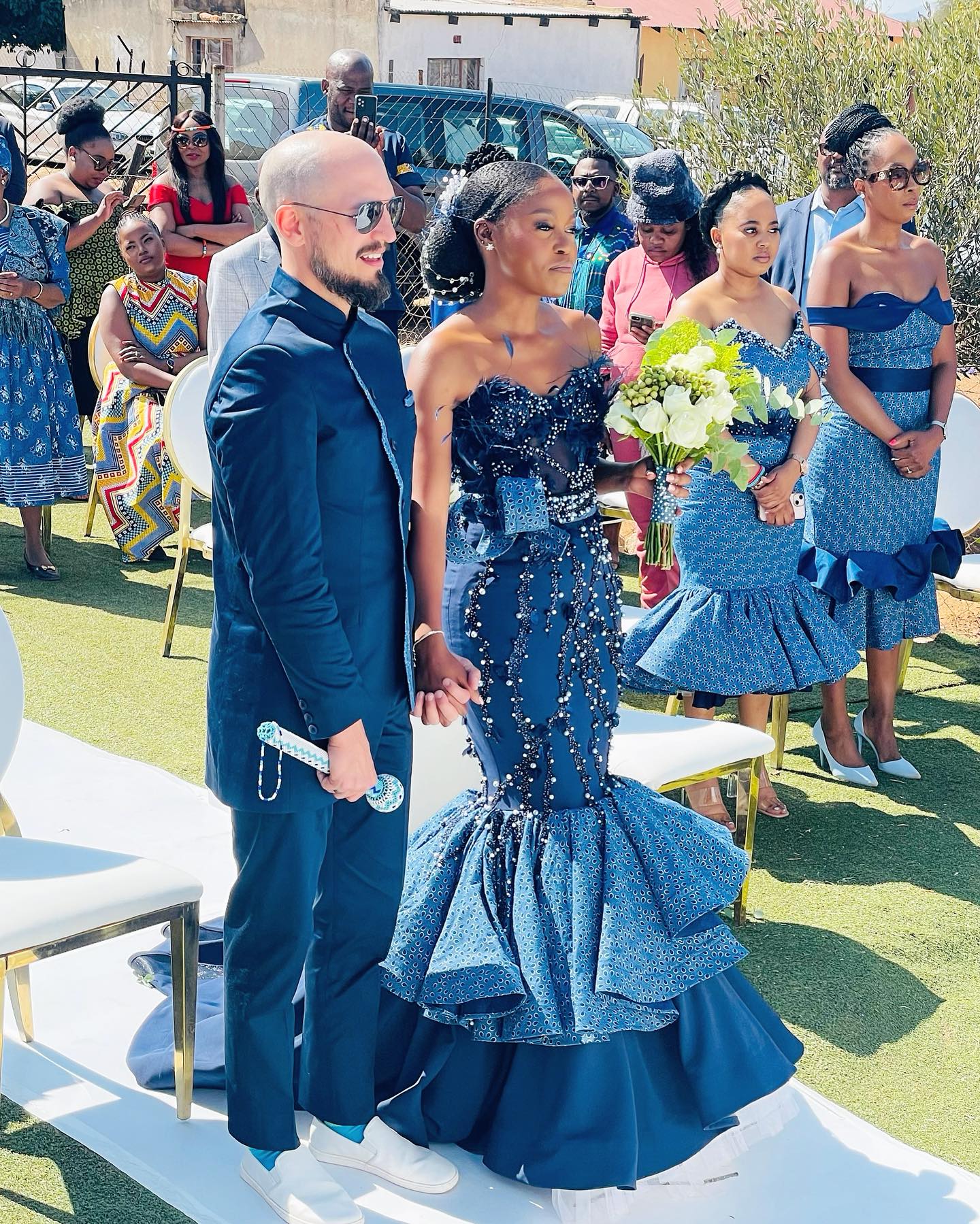
Conclusion
Tswana traditional dresses are not just garments; they are a representation of the rich cultural heritage and identity of the Tswana people. These dresses showcase the beauty, elegance, and craftsmanship that have been passed down through generations. They hold deep cultural significance, symbolizing celebrations, rituals, and important milestones. By appreciating and embracing Tswana traditional dresses, we not only honor the traditions of the Tswana people but also celebrate the diversity and beauty of our global cultural tapestry. So let’s continue to admire and respect these stunning garments for their historical and cultural value.
Comments are closed.